Hop latent viroid (HLVd) occurs worldwide in hops, but in recent years, it has jumped to cannabis, causing significant reductions in yield, cannabinoid concentrations, and profits across the US and Canada. Some experts have started to call HLVd “the COVID of cannabis”.
HLVd is a single-stranded, circular, infectious RNA. Similar to viruses, viroids are completely dependent on their host plant’s metabolism for replication. However, unlike viruses, viroids do not have a protective layer, such as a protein coat. In fact, viroids are the smallest known plant pathogens, measuring approximately 40nm in size.
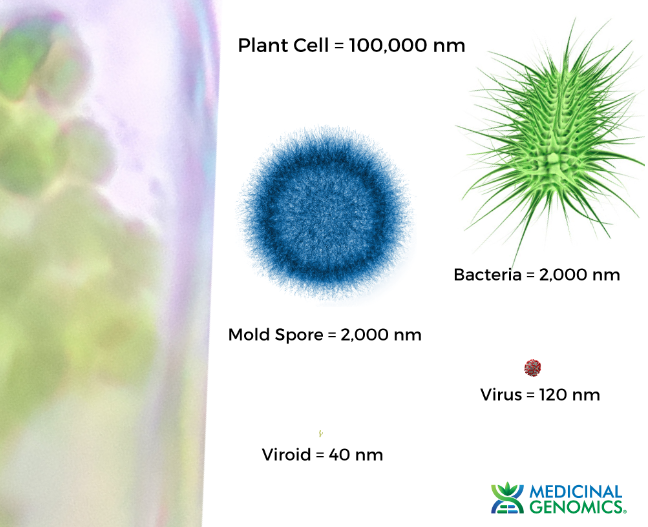
One study estimates as much as 90% of California cannabis is infected with HLVd, costing nearly $4 billion in lost yields. Another study, conducted by Dr. Zamir Punja of Simon Fraser University, found that 40% of cannabis flower sold in Canadian dispensaries tested positive for HLVd. Thankfully, the HLVd is not harmful to humans.
The symptoms of HLVd vary widely, depending on the stage of development the plant is in when the infection occurs.
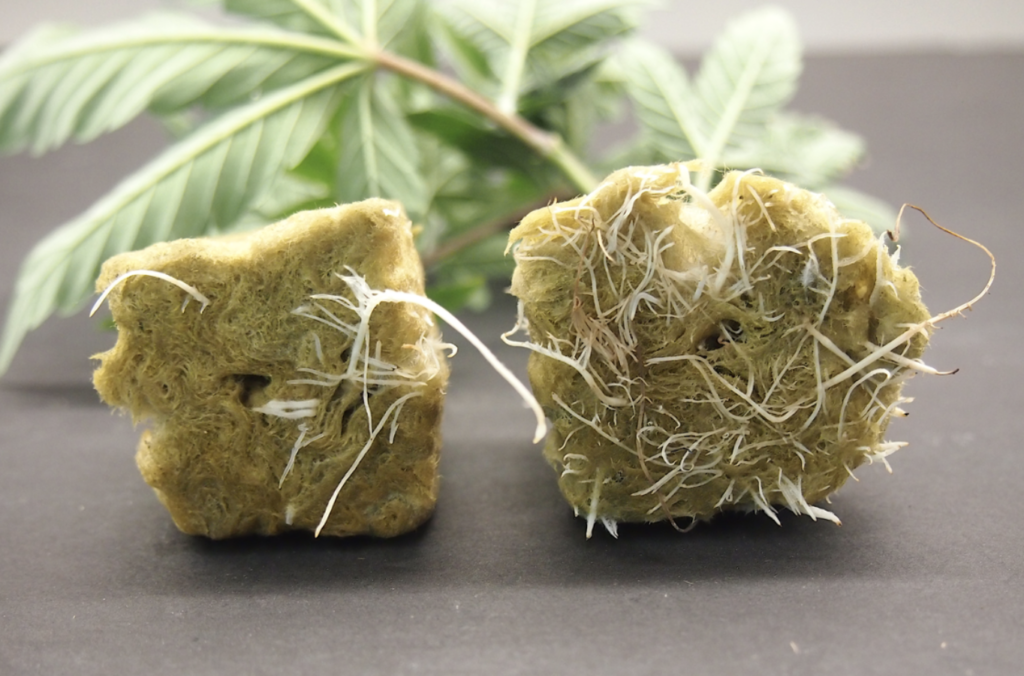
Propagation Stage
Root length and root emergence are greatly reduced in clones taken from HLVd-infected mother plants. This reduction in root development results in slower-developing clones and poor-quality rooted cuttings. Reduced root development may also make plants more susceptible to root-infecting pathogens, such as fusarium and pythium.
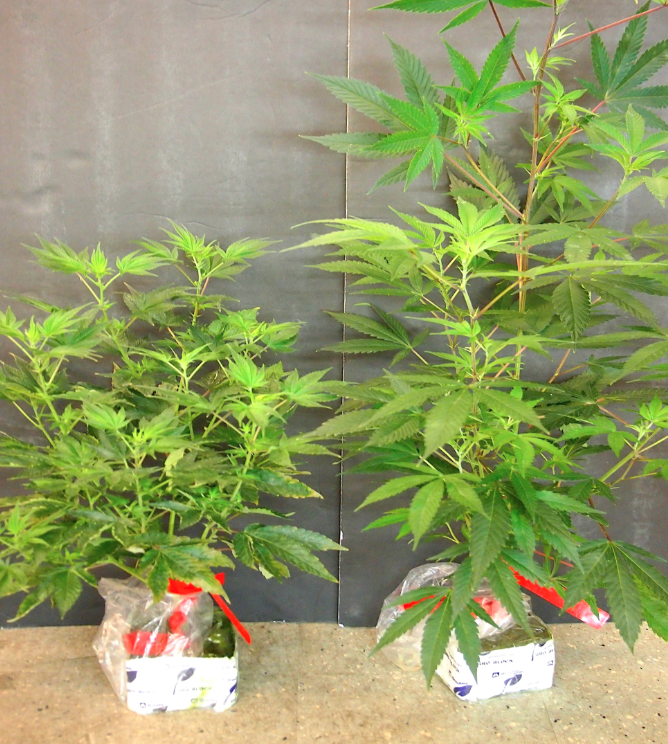
Vegetative Stage
Plants that become infected with HLVd during the vegetative stage will often have stunted growth, including the following symptoms:
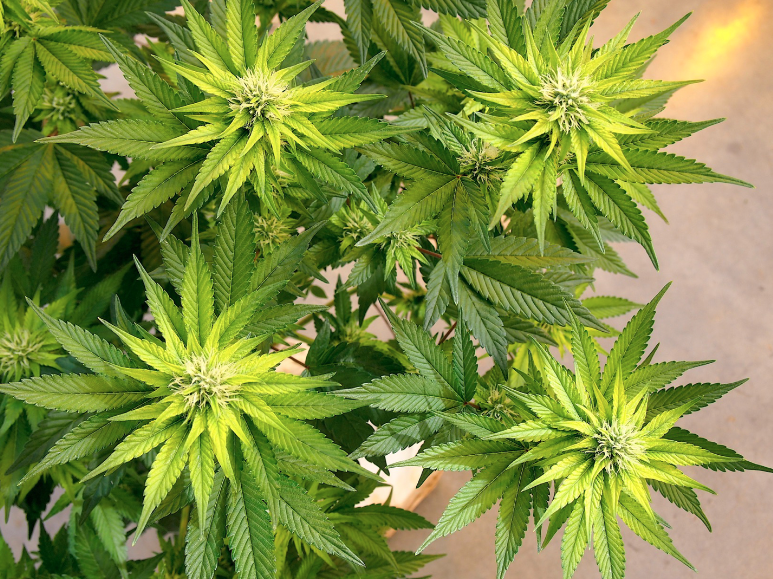
Flowering Stage
Signs of HLVd infection are often most apparent during flowering. In fact, the concentration of detectable viroid is higher during flowering than vegetative stage. Researchers are still unsure why HLVd concentrations increase during flowering, but it may have something to do with added stress on the plants.
Just like during vegetation, flowering HLVd-infected plants will appear smaller than healthy plants; and they may also exhibit unexpected yellowing of leaves near the bud sites, similar to the photo below.

Not only will HLVd-infected plants produce smaller flowers, but they will also produce fewer cannabinoids (up to 50% less). Electron microscope images captured by Dr. Punja show that HLVd-infected plants have under-developed trichomes, which are the cannabinoid-producing glands in the cannabis plant.
HLVd transmits from one plant to another via contact with infected plant sap. This most commonly occurs via tools, equipment, and workers that have come into contact with infected plant sap. Cultivators should always sterilize tools, equipment, and hands with a 10% bleach solution before starting work on a new plant. Experiments performed by the Medicinal Genomics team showed that leafhoppers, which are known vectors for beet curly top virus and lettuce chlorosis virus, may also have the ability to spread HLVd. When leafhoppers feed on plants, they ingest infected plant sap, which can then be transmitted to their next meal.
HLVd can also spread through cloning when cuttings are taken from an infected mother. And because symptoms of HLVd are not always obvious in the vegetative stage, it can be hard to identify infected mother plants. This is especially true when infection occurs later in the plant’s development since stunted growth will not be as apparent. Growers should test mother plants before taking new cuttings to make sure they are producing clean clones.
Since HLVd is highly concentrated in roots, it can spread through water in hydroponic systems. Healthy plants that share water with infected plants may pick up the viroid, without any root-to-root contact.
Lastly, experiments have shown that HLVd can be transmitted via seed, either from infected males crossing with healthy females or healthy males crossing with infected females. In both cases, HLVd was detected on the seed coat and inside the seed.
HLVd has figured out how to high jack Rolling Circle Amplification (RCA) and RNA ligase in the host plant. When RNA or DNA molecules are circular, they can be replicated like a wheel that becomes and infinite template. This creates long concatemers of the viroid genome. These concatemers are then sliced and diced into 256 base segments with the Ribozyme activity of the original double stranded viroid. Once the genome is diced, plant RNA ligases seal it back into many circles and the process can repeat itself. Take a look at Viropedia.net, This tool maps the variants found in your HpLVd genome to the Jamaican Lion transcriptome so you can see the regions in the Viroid that have homology to the cannabis mRNAs.

A few studies in closely-related hops (humulus lupulus) suggest that HLVd may exert its pathology through RNA interference, which occurs when short viroid sequences interfere with the expression of genes with which they have sequence homology.
The most likely candidate is the COG7 gene, which is involved in the formation of the organized shoot apical meristem. So far, the Medicinal Genomics team has found that 69% of the published HLVd genomes have homology to the COG7 gene, which may explain how HLVd affects plant growth. There are 24 other genes in the cannabis genome that have short homologies to HLVd genomes described in our latest preprint.
HLVd moves systematically throughout the plant via the phloem over a period of approximately 6 weeks. HLVd enters the plant’s phloem at the point of infection where it travels to the roots and then throughout the entire plant.
Experiments conducted by Dr. Punja’s team at Simon Fraser University have shown that:
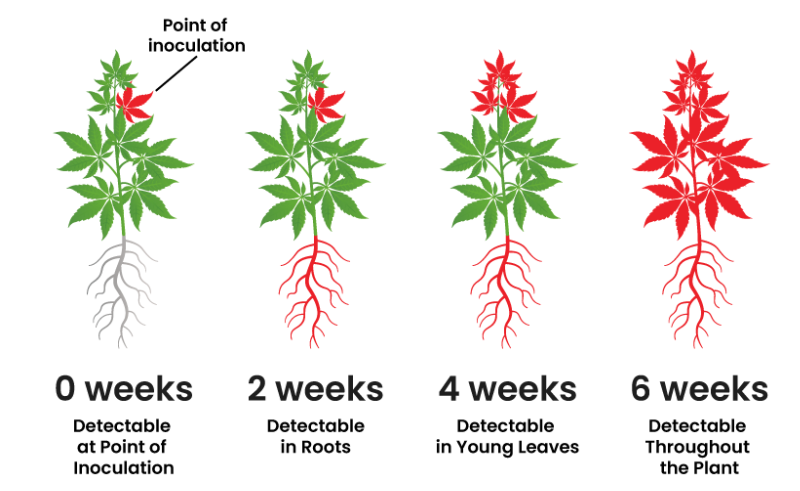
This means that If one were to test a plant fewer than 6 weeks after infection, some tissues will test positive for HLVd, while others will test negative. That is why it is important to survey multiple parts of the plant when screening for HLVd.
Yes. Certain cannabis cultivars have demonstrated an ability to withstand HLVd infection. At CannMed 23, Kevin McKernan shared data from an experiment where he intentionally inoculated the Jamaican Lion cannabis cultivar with HLVd. Soon after, the researchers were able to detect HLVd in the plant’s roots; however, leaf and flower tissue tested negative up until harvest time. It was only after the plant was allowed to grow 3 weeks past the typical harvest time that lower branches began to test positive for HLVd.
The flower quality and yield also appeared to be unaffected. Other tests have shown that certain cultivars have a lower proportion of HLVd-positive plants.
The long-term solution to HLVd is to breed resistant cultivars that do not experience yield or potency loss. This is the case in hops, where HLVd is rampant, but it does not cause significant financial harm to the crop.
HLVd is surprisingly stable. Experiments have shown that at room temperature the viroid remains detectable for up to 5 days on gloves and 4 weeks on dry leaves.
Additionally, exposing HLVd-infected tissue to high heat (up to 70C), UV-C, and disinfecting chemicals such as Virkon, Zerotol, Bleach, and Hypochlorous acid will not destroy the viroid.
It takes time, but the best method for eliminating HLVd from a growing facility is with a process of testing and removing infected plants. At CannMed 23, Dr. Zamir Punja demonstrated that his team used this process over a period of 7 months and reduced the percent positive rate in his facility from 35% to 7%.
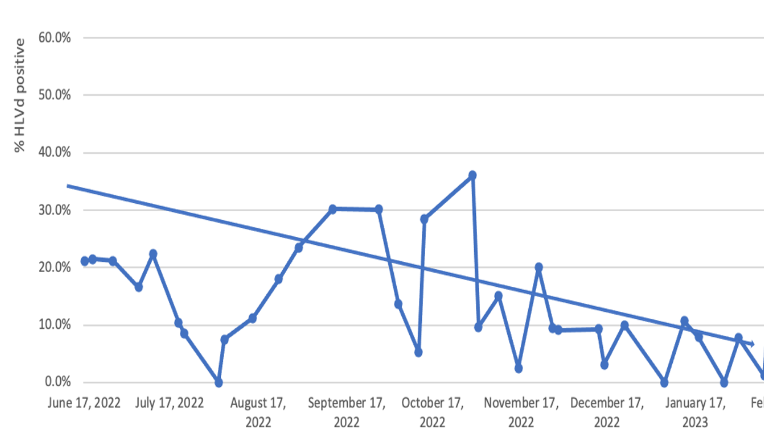
Meristem tissue culture can also be used to produce viroid-free clones; however,it is a long and laborious process that should only be reserved for cultivars that are critical to your business. As with most plant pathogens, prevention is key.
Additionally, tissue culture is not always effective. HLVd is not uniformly distributed throughout the tissue culture, and in some cases, viroid replication may be delayed during tissue culture only to reemerge once plant growth resumes.
Heat therapy is not effective in eliminating HLVd, and cold therapy is still unproven.
The best way to test for HLVd is with a qPCR assay that is designed for, and validated on cannabis. Medicinal Genomics’ PathoSEEK® Hop Latent Viroid Detection Assay is a reverse-transcriptase quantitative PCR (RT-qPCR or QRT-PCR) assay that screens for the presence of Hop Latent Viroid in cannabis leaves and roots. DNA can be extracted from infected fan leaves using Leaf Punch Lysis Solution and the assay can be run on most qPCR machines with FAM, HEX, and ROX optical channels.
If you are looking for a lab to test for HLVd, you can fill out the form below and we will connect you with a partner lab in your area.
Cultivators who don’t have enough volume, lab experience, or start-up cash to test plants in-house can outsource to one of our partner labs. Fill out the form below and we will connect you with one in your area, if available.
©2024 MEDICINAL GENOMICS CORPS
Copyright all right reserved.
Signup to receive email updates on blog posts, podcasts, webinars, new products, and more!
Join us at the CannMed 24 Innovation and Investment Summit, an exclusive experience of discovery, development, and networking with innovators from around the world.